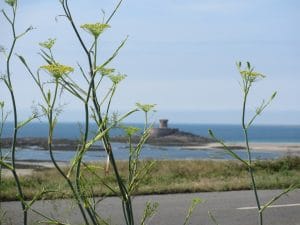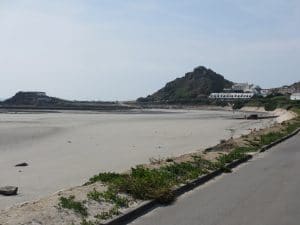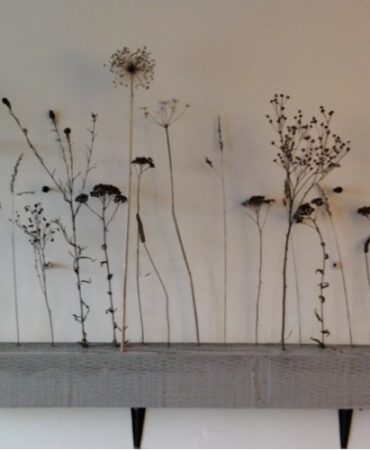Currently Empty: £0.00

Wild plants around Jersey
Written by Herb Society Council Member – Nicky Westwood
Jersey is an irregular shape but is approximately 6 miles by 11. We have sandy shores around three sides, and cliffs on the north. This tendency to face the sun has made us an excellent island for growing, and we are renowned for our tomatoes and potatoes. It also gives us great diversity in our flora, and there is a national park which stretches around most of the coastline.
 A couple of weeks ago evening primroses were everywhere, but after the last few weeks of sunshine only a few parched remnants remain. Now the fennel (Foeniculum vulgare) is the most conspicuous, growing all along the roadsides, through the fields, and over the dunes. These have sewn wild in my garden, and I often snap a bit off and eat it as I go by. I like the smell as much as anything else!
A couple of weeks ago evening primroses were everywhere, but after the last few weeks of sunshine only a few parched remnants remain. Now the fennel (Foeniculum vulgare) is the most conspicuous, growing all along the roadsides, through the fields, and over the dunes. These have sewn wild in my garden, and I often snap a bit off and eat it as I go by. I like the smell as much as anything else!
These pictures are taken along the west coast, St Ouen’s Bay, to L’Etacq at the north end of the bay. Here there are vast areas of sea beet (Beta vulgaris). This also grows wild in my garden on the east coast, and I regularly harvest it and cook it instead of spinach. I personally prefer it as it has more flavour and doesn’t turn into a sloppy mass. The bunny tails (Lagurus ovatus) have appeared, bobbing their cute heads about. These were dyed and used for the fine detail on the Battle of Flowers’ floats every year, although demand has now exceeded supply with the result that they are shipped in for this event which is always at the beginning of August.



I reach the furthest north west corner of Jersey, and stop at Grosnez point. Here the gorse (Ulex) and heather (Calluna vulgaris) is coming through, and unlike a lot of the other plants, seeming to enjoy the dry weather! The other islands, Guernsey and Sark, are clearly visible from here. Alderney, 35 miles away, can be seen on a very clear day.
All photos taken and provided by Nicky Westwood




